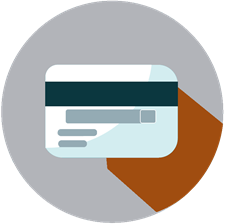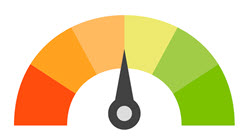Credit cards can be a great tool, but can also be very risky if not managed correctly. They can help build credit and get loans at a better interest rate. If you get behind on your payments, the outstanding balance could grow to very large, very quickly. The resource below has information about best practices while having and using a credit card.
RESPONSIBLE USE OF CREDIT CARDS
CREDIT CARD BEST PRACTICES
Credit cards act as loans and without paying the balance back on time, you could quickly end up behind on your payments. Here are some best practices for owning a credit card:
- Read the Entire Cardholder Agreement – The agreement spells out fees and finance charges, so make sure you understand the terms.
- Learn About Finance Charges – If you do not pay the amount due within the grace period, you will likely be charged interest on the unpaid amount. For more information, visit the Credit Cards – Management resource.
- Stay Within Your Limit – Track your charges throughout the month and stay beneath your limit to avoid fees, which could damage your credit rating.
- Be Sure You Can Afford It – Do not use your credit cards to buy things you cannot afford. Follow your spending plan to help you keep control of your finances.
- Pay Off as Much as You Can – Keep your credit card balance low and pay off as much as you can. Set a goal to pay your balance in full each month.
- Pay on Time – Pay your credit card bills on time. Set up automatic payments and set up alerts to remind you when a payment is due. (Be sure to confirm the amount is available in your payment account to avoid overdraft fees.) On-time payments help build good credit because it shows lenders that you are reliable.
- Understand Cash Advances and Balance Transfers – Some credit card companies offer a cash advance or balance transfer. If you choose a cash advance or balance transfer, you could be charged a fee and a higher interest rate.
- Review your Credit Report – On the Annual Credit Report website, you can receive one free copy of your credit report. You can do this once a year from each of the three largest credit bureaus in the United States – Equifax, Experian and TransUnion.
- Applying for a New Account? – When a lender asks for your credit report, an “inquiry” registers on your report. A high number of inquiries may negatively affect your credit score, so only apply for a new account if you need it.
- Get Debt Help Early – If you feel financially overwhelmed, contact your lender and try to work out a payment plan that works for you. Also, talk to a reputable, non-profit credit counselor who can help you get out of debt.

card safety tips
It is very important to stay aware of your credit card activity and watch out for any signs of fraud. Many credit card companies give customers the ability to sign up for alerts (email, text, phone) that help keep track of your card. Here are some security tips for using your credit card safely:
- Report lost or stolen cards immediately.
- Make a list with the Credit Card Name, Bank, Account Number (last 4 digits) and the Customer Service Phone Number. Store the list in a safe place.
- Activate and sign your card as soon as you receive it.
- Protect your cards as if they were cash. Be mindful whenever you use your cards.
- Do not put your card number in an email or over the phone unless you made the call.
- Do not leave your card in your car or lend it to anyone.
- Get your card back after every purchase and check the receipts to make sure everything is correct.
- Keep copies of your receipts and compare them to your billing statement to make sure the amounts are correct. Contact the credit card company if you see a charge you do not recognize.
- If you receive a replacement card, destroy your old card.
- Make sure online purchases are secure with encryption to protect your account information. Look for “secure transaction” symbols.
For more information, visit the Identity Theft and Fraud resources.


